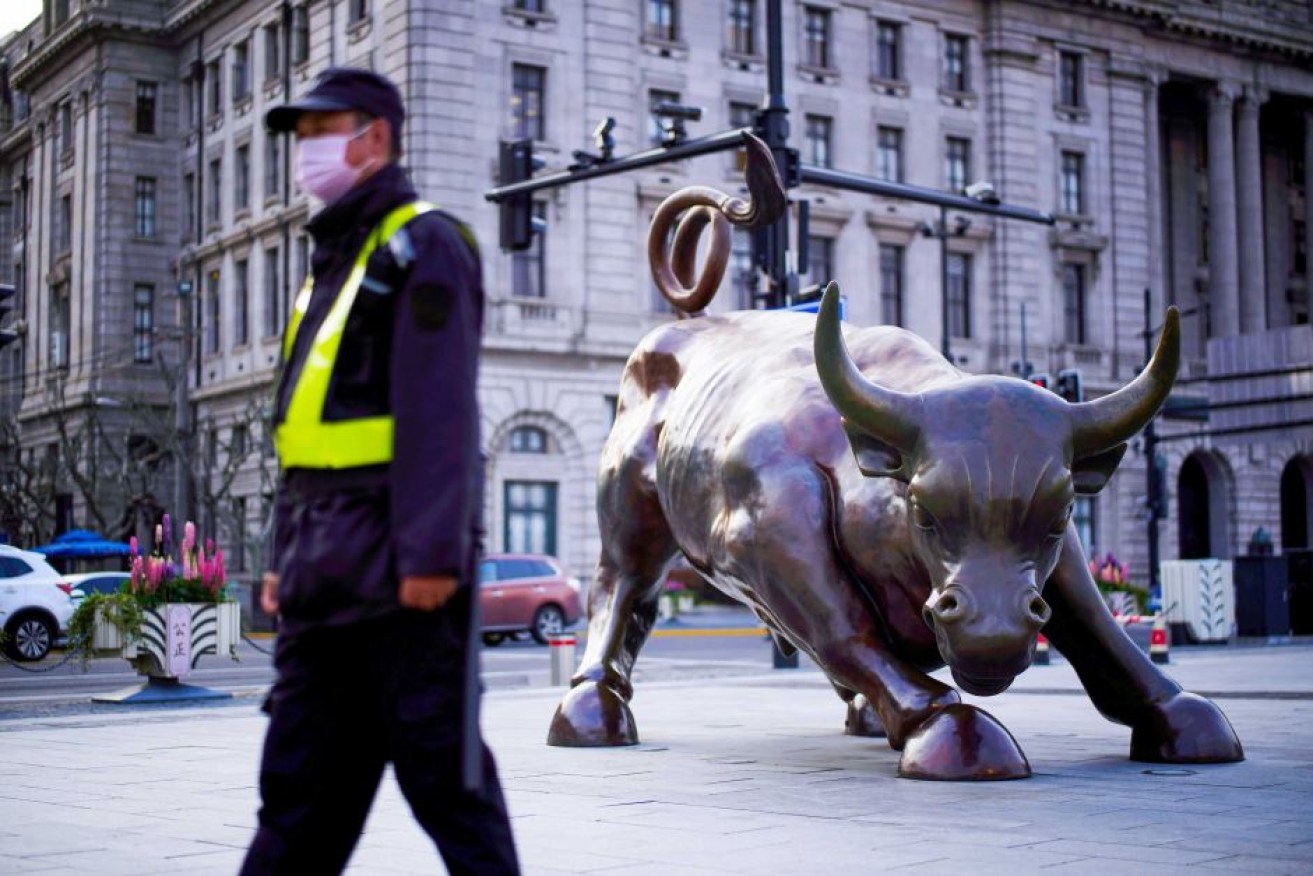China’s economic recovery from coronavirus could be ugly – and that’s bad news for the rest of the world

A high-profile Chinese investment bank has slashed its 2020 GDP growth forecast to just 2.7 per cent — a huge drop for China. Photo: Reuters
Coronavirus brought the second-largest economy in the world to a halt, and jumpstarting it is proving difficult.
China claims it has effectively contained its outbreak, with only imported cases of COVID-19 being reported for several days.
Hubei – where the global pandemic started – is opening its borders.

Life is slowly returning to normal in China, with residents in the coronavirus epicentre of Hubei allowed to go outside for the first time in months. Photo: Reuters
Offices are slowly starting to fill up again and factories are switching back on.
Australian factory owner Mike Chai is riding the rollercoaster of China’s coronavirus outbreak.
After a two-month shutdown, his cabinet factory in southern Guangdong province is back open.
But now it can’t get enough workers to catch up on orders.
“Because we stopped production in late January, we’re now clearing a backlog,” he said.
Australia and New Zealand are where most of the bathroom cabinets he makes in Guangdong end up, and Mr Chai is struggling to recruit staff.
“Only 60 per cent of our workers are back and many female employees can’t return from their home towns because their kids are staying at home,” he said.
The badly needed economic jolt after two months of restrictions will be short lived.
“We’re bracing for a slowdown in Australia and New Zealand,” he said.
“Once this backlog’s cleared, we’ll be cutting capacity and will have to start laying people off.”
The lights back on, but conducting business is not proving easy
His factory is one of thousands hit by the global economic shutdown just as they were starting to recover from the peak of China’s outbreak.
Many factories and small businesses that shut for the lunar new year holiday in late January remained closed as the outbreak surged and are only just re-opening.

Chinese manufacturing is resuming, but it will take a while for all workers to return to their jobs. Photo: China Daily via Reuters
The bounce back of other sectors such as construction is also suffering labour shortages due to ongoing restrictions like the continued closure of most schools.
The car manufacturing heartland of Hubei, where the global pandemic started, only relaxed its lockdown measures this week.
Restrictions still apply to many people there and employees are only gradually returning to work.
“In year-on-year terms, we still expect deeply negative activity growth in March,” analysts from market research firm Nomura said in a recent briefing note about China’s manufacturing activity.
Although some estimates suggest up to 70 per cent of China’s workforce has resumed work, many small businesses are struggling.
A small shop owner in Beijing who the ABC interviewed in February as he opened his door to customers again has already gone out of business.

Qiao Dong lost his sweet potato snack business in Beijing due to the coronavirus pandemic. Photo: ABC News/Steve Wang
“The rent was too much,” Qiao Dong said.
He packed up his bags of sweet potato chips and returned to his home province Shandong.
Don’t expect China to lead a global recovery
China’s economy has grown every year since 1976.
It survived the recent trade war with the United States, the 2007 global financial crisis, and the 1989 crackdown on protesters in Tiananmen Square.
But the first economic data suggests it isn’t expanding during the coronavirus pandemic, and that is bad news for the rest of the world.

President Xi Jinping wants to double China’s economy from 2010 to 2020, but coronavirus may interfere with those plans. Photo: State Media
Government figures showed only four out of 41 industries increased their profits in January and February – China’s epidemic peak – compared to last year.
Perhaps tellingly, one of them was the production of cigarettes.
It’s the global drop-off in demand for Chinese exports more than domestic issues that is dashing hopes for a Chinese-led global economic recovery.
Goldman Sachs recently forecast a 9 per cent contraction in exporting activity for the first quarter of the year.
And another economic-tracking organisation, the China Beige Book, found economic indicators for March were even worse than February when China’s outbreak was at its peak.
Tweet from @ChinaBeigeBook
It estimated GDP could contract more than 10 per cent in the first quarter.
Longer term, China’s most high-profile investment bank, CICC, slashed its 2020 GDP growth forecast to just 2.7 per cent.
That’s well below the usual official target range of 6 per cent that’s needed to achieve President Xi Jinping’s poverty alleviation goals.
China has set the ambitious goal of doubling its economy from 2010 to 2020.
Michael Pettis from Peking University says an announcement by such a visible bank is “very important”.
Tweet from @michaelxpettis
“It may be part of a developing consensus within at least part of the Beijing policy-making elite that China will pay an unacceptable price if it does not allow GDP growth rates to drop substantially,” Professor Pettis wrote on Twitter.
Even during a prolonged slowdown over the past decade, China’s government has kept GDP growth rates high by lending to debt-laden property developers and splurging on infrastructure projects regardless of whether they could turn a profit.
Professor Pettis expects China’s government to spend huge sums on infrastructure and other projects in the second half of the year to hit GDP growth targets – even if much of the spending is on superfluous projects.
That at least will help demand for Australian exports like iron ore.

As restrictions ease, people are returning to the streets of Beijing, but there are concerns that a second outbreak is just around the corner. Photo: ABC News: Bill Birtles
But there’s little optimism here that passing the peak of the outbreak means a quick economic recovery – particularly if a second wave of infections begins.
But Mr Chai thinks at least individuals in China will be better able to cope.
“Chinese people always save money for a rainy day,” he said.
“That’s why they can weather it out to stay home and look after the kids.”
–ABC








